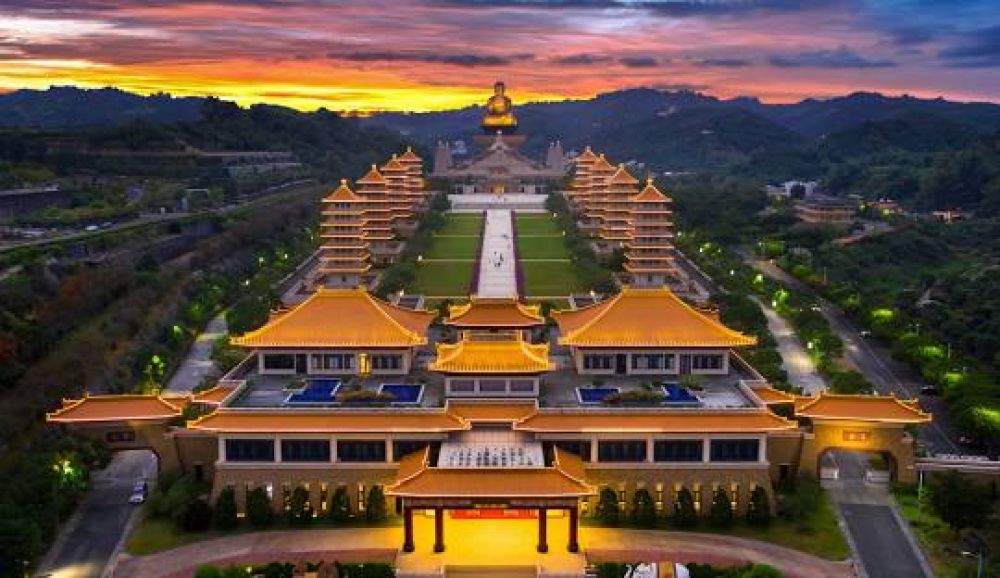

The Fo Guang Shan Buddha Museum, formerly known as the Buddha Memorial Center, was conceived by Venerable Master Hsing Yun in 1998 and officially opened to the public in December 2011. This sprawling religious and cultural complex has quickly become a major destination for both pilgrimage and tourism, situated in the Dashu District of Kaohsiung, Taiwan.
The museum was established to house a relic of the Buddha, the tooth relic, which is enshrined on the second floor of the main hall. Since its inception, the museum has drawn countless visitors from around the world, offering a unique blend of spiritual insight and cultural experience.
The majestic architecture and peaceful surroundings contribute significantly to the museum's allure. The complex includes a main hall, an exhibition hall, a cultural hall, and several shrines and pagodas. The most prominent feature is the 108-meter tall statue of the Buddha Amitabha, which dominates the skyline and symbolizes the museum's purpose of propagating Buddhist teachings through cultural undertakings.
Tourism at the Fo Guang Shan Buddha Museum has seen a steady increase since its opening. Initially, the complex captured the interest of religious devotees and those fascinated by Taiwanese culture and architecture. Over time, its wide-ranging activities and serene atmosphere have attracted a more diverse international crowd, ranging from solo travelers to family groups, seeking both education and leisure.
Eco-Tourism: In recent years, there has been a growing emphasis on sustainable travel practices. The Fo Guang Shan Buddha Museum contributes to this trend by maintaining environmentally friendly facilities and encouraging visitors to engage in mindful and respectful exploration of the site.
Experiential Tourism: Tourists are increasingly looking for experiences that go beyond sightseeing. The museum offers a range of participatory activities, including meditation sessions, calligraphy and art workshops, and vegetarian culinary experiences that allow visitors to immerse themselves fully in the Buddhist way of life.
Digital Transformation: With the global pandemic's impact on travel, the museum has embraced digital tools to offer virtual tours and online resources, catering to those who cannot visit in person. This trend towards digital engagement is reshaping the future of tourism, creating new opportunities for explorers worldwide.
The Fo Guang Shan Buddha Museum is open year-round and welcomes millions of visitors annually. It's recommended to check the official website for the latest visiting hours and possible changes due to special events or public health guidelines. Admission is free, although donations are appreciated.
In conclusion, the Fo Guang Shan Buddha Museum is not just a site of profound religious importance; it has become a beacon of cultural exchange and tourism innovation. Visitors leave enriched by the experience, and the museum continues to adapt to the evolving desires of travelers while upholding its core mission of disseminating Buddhist teachings.